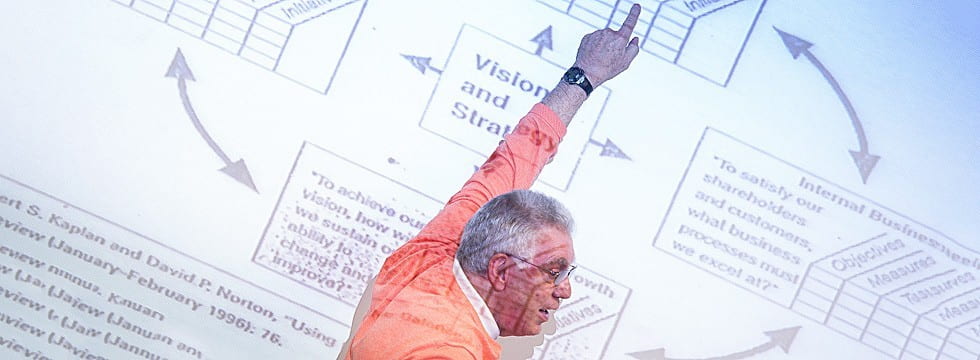In this post I want to highlight the process that we used to create the brand spanking new EMBA homepage template in Canvas. So why should you care if you don’t work in the EMBA program? Well, lessons learned in this type of design process can be applied to any programmatic endeavor in your department. In addition, I believe that the finished product exemplifies an approach to the design process that places the needs of both professors and students first. Now on to the interview portion of this post (which I conducted with myself).
How did this project come about?
The Executive Master’s of Business Administration (EMBA) program is piloting the innovative Canvas learning management system during Fall 2016 and Spring 2017. As such, administrators in RCB saw this as a perfect opportunity to create a cohesive brand for their courses. They contacted the CETL in Spring to get this project underway. On the CETL side, we saw this as a fabulous opportunity to infuse good instructional design in a programmatic way.
Who made up the template design team?
The team consisted of instructional designers from the CETL, marketing staff from Rollins College of Business, and EMBA administrators. Optimally, EMBA faculty should have been included on the team but none were available at the time. Hint: They were all gone enjoying well-deserved Summer vacations.
What was your vision for the template?
Our major goal here was to create a shareable, mobile-responsive template friendly to both professors and students. On the professor side, we aimed to create an easily editable page that showcased each professor’s unique personality and approach to the course while still giving a consistent look and feel across courses. For students, we wanted to provide a short, impactful overview and guide to the course.
What were the limitations?
There are limitations to consider in any design process. Some of ours included somewhat limited homepage options in Canvas and variable professor technology skills. In addition, the lack of EMBA professor design input was an additional limitation.
What process did you use?
Our first step here in the CETL was investigating what had already been done with Canvas homepages as well as drawing on our own past experiences as designers and instructors. In any design process there’s often no reason to completely reinvent the wheel – a ton of great models already exist to be iterated upon. In this case, we investigated many homepages shared on the Canvas Commons website. After throwing out many overly complicated, ugly, and unfriendly options we settled on a WordPress-like look for the homepage. Next, we defined what type of content needed to appear on the page. As you can see below this included a personal greeting and photo of the professor, a short description of the course, measurable learning objectives, and information on the professor’s approach to the course. In other words, when students enter the course they get a personalized overture to the class experience and expectations. Finally, we met as a group and showcased our preferred design along with several alternatives. Happily, the design below was chosen by the team – woohoo! I need to send a special thanks here to RCB Associate Dean for Faculty and Research and Professor Nate Bennett for allowing the CETL to use his edited homepage for this blog post. Click Nate’s homepage below to get a better look at the finished product.
How did you distribute and implement this template?
We imported the template into each EMBA course but professors still needed to edit and activate their respective copies. To meet this need our awesome Manager of Faculty Development and Support Valora Richardson and Learning Technologist Kathleen Mapson provided a training session for all EMBA faculty. Kathleen and fellow Learning Technologist Zoe Salloom have also been holding one on one sessions with individual faculty to help guide them through the template editing process.
Why qualify “Finished” with quotes?
So this qualification typifies the fallibilist design philosophy of the GSU Instructional Design Team: No design project is ever finished and all design projects are doomed to fail at some point in the future….and this is ok. At some point this template is no longer going to meet the needs of the EMBA administrators, faculty, and students. This could happen the first week of the Fall 2016 semester or a year from now. When this inevitable fizzle occurs we’ll be here to help the EMBA program with continuous evaluation, iteration, and reimagining. We can do the same for you. Please get in touch with us if you’d like to think about your courses on more of a programmatic scale. This is the good stuff that we live for!



dddddddddd https://www.youtube.com/
ddddddddddddd ddddddddddd